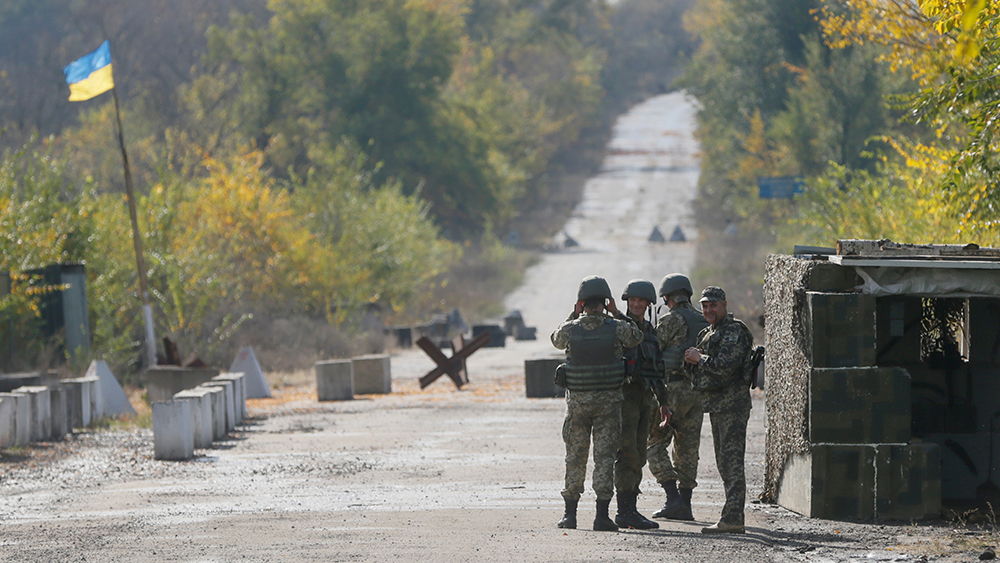It was obvious from the start that the Minsk II agreement for eastern Ukraine would fail to reach its targets. As long as sanctions are in place, however, it may still provide the basis for a more lasting solution.
It has become almost cliché in foreign policy circles to call the Minsk agreements dead ends. And not without good reason: the diplomatic deal went into effect more than a year ago and not even the very first item on the list – the ceasefire – has been implemented. Both the Ukrainian military and pro-Russian separatists accuse each other of frequent violations, and the recent Normandy summit in Berlin failed to bring any tangible breakthrough.
But we can’t ignore Minsk II’s most important achievement: hundreds, possibly even thousands of lives have been saved because of this document. The intensity of fighting has dropped off dramatically, effectively freezing the conflict. That’s not the only reason Ukrainian President Petro Poroshenko and Russian President Vladimir Putin signed these dual agreements. Both sides have their eyes set on another aspect, one that goes beyond humanitarian concerns and gives Minsk II a glimmer of hope.
Battle over Sanctions
For Poroshenko, Minsk II is a way to cement alliances with Western powers capable of influencing Moscow. Direct negotiations with the Kremlin are difficult for Kiev, and not just because of Russia’s traditional lack of respect for Ukrainian sovereignty. Putin believes he is waging a war against the West, and he sees Ukraine as a battleground.
For the Ukrainian government, sanctions are the best tool that Western powers can wield. And maintaining these sanctions is especially important for Kiev now that it’s willing to accept political compromises that would otherwise be unacceptable. Ukraine’s strategy rests on two basic principles: show your willingness to achieve peace, and show your counterpart’s unwillingness to adhere to Minsk II – therefore reinforcing the need to maintain sanctions.
Nevertheless, it’s hard to believe that Kiev will really implement the part of the agreement calling for constitutional reform and elections in the separatist-controlled parts of Donbass. The political risks there are simply far too high: It would be awkward for Kiev to legitimize the separatists after calling them terrorists, and there would be outrage if the government changed laws to suit Russian demands, a step many Ukrainians would consider capitulation.
So rather than undermine Minsk II to appease Ukrainians’ patriotism or implement the deal to appease Moscow, Poroshenko has gone a third route – playing for time as long as sanctions are on the table. Russia’s atrocities in Syria will keep this strategy alive through the next Normandy summit, but if it doesn’t pay off soon, there is a significant chance that Poroshenko will quit Minsk II altogether. There would be no incentive for the Ukrainian president to symbolically adhere to an agreement that has never exerted any real pressure on Putin.
This doesn’t mean that Kiev will immediately initiate an offensive in eastern Ukraine – it lacks the resources to succeed, and the human and financial cost would be far too great for Ukrainians to accept. But it would likely designate Donbass “occupied territory,” as it did with Crimea, and that would finally snuff out the Minsk agreement. It was, after all, written on the premise that there is no Russian military presence in Ukraine, and that the separatists are acting entirely on their own initiative.
Escalation on Demand
Sanctions also give Russia a reason to adhere to Minsk II. Moscow will not implement its security pledges as long as Kiev refuses to fulfill its political promises, but then it doesn’t need to – Putin’s main goal is to show Ukraine’s lack of willingness to implement Minsk II, and thus the absurdity of leveling sanctions against Moscow.
The Kremlin has no more faith in the agreement than Kiev. Putin sees the separatist enclaves as a powerful tool allowing him to ratchet up tensions whenever necessary. A real peace agreement would leave the Kremlin without a significant source of leverage on a country it sees as a legitimate geopolitical interest. As long as Kiev and its Western allies refuse to grant Russia uncontested domination of Ukraine, it will not let Donbass return to the country under Poroshenko’s conditions.
Minsk II lets Moscow keep its soldiers on the ground without further sanctions – there’s even the possibility that existing sanctions will be lifted. If these agreements were to collapse entirely, there is a risk that Putin could again utilize separatist attacks as leverage on Kiev or Western powers. It seems likely that the Kremlin will refrain from any large-scale offensive until the Normandy leaders decide that the agreement has to be enforced “unconditionally.”
A Frozen Peace
For the brokers of the deal, the situation isn’t ideal but it is acceptable. It won’t pave the way to the restoration of Ukrainian territorial integrity, which is supposed to be the ultimate goal of Minsk II. But by “freezing” the conflict, François Hollande and Angela Merkel have been able to dial down the intensity dramatically, saving lives and buying time to address some of the damage the crisis has done.
Minsk II will not lead Russia to relinquish its post-imperial claims on Ukraine, nor lead Ukrainians to accept them – the core conflict will remain. But as long as sanctions are in place, the agreement helps Western leaders stabilize the situation and create a foundation for a peaceful resolution of the crisis in the future.







